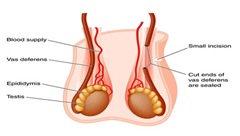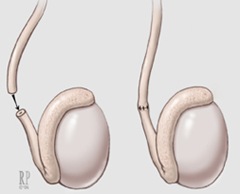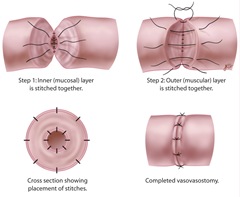 Recovery after a vasectomy reversal is a crucial phase in the journey to restoring fertility, and understanding what to expect can significantly improve healing and long-term outcomes. While the surgical procedure itself is highly specialized, the post-operative period plays an equally important role in determining success. In this blog, we’ll cover recovery timelines, self-care tips, and what to expect during each stage of healing.
Recovery after a vasectomy reversal is a crucial phase in the journey to restoring fertility, and understanding what to expect can significantly improve healing and long-term outcomes. While the surgical procedure itself is highly specialized, the post-operative period plays an equally important role in determining success. In this blog, we’ll cover recovery timelines, self-care tips, and what to expect during each stage of healing.
What Happens Immediately After Surgery?
The vasectomy reversal procedure is typically performed as an outpatient surgery under general anesthesia. Most patients are discharged the same day with instructions to rest and follow a detailed recovery protocol.
- Initial Pain and Swelling: Mild discomfort, swelling, and bruising in the scrotal area are common and usually peak within 48 hours.
- Supportive Garments: Patients are advised to wear tight-fitting underwear or a jockstrap to support the scrotum and reduce strain on the surgical site.
- Activity Restrictions: You should avoid lifting heavy objects, bending, and any form of strenuous activity during the first 1–2 weeks.
Self-Care Tips for a Smooth Recovery
Proper care during recovery not only eases discomfort but also helps ensure the procedure’s success.
- Apply Ice Packs: Icing the area for 15–20 minutes every hour during the first 24–48 hours can help reduce swelling.
- Follow Medication Guidelines: Take prescribed antibiotics and pain relievers as directed to prevent infection and manage discomfort.
- Keep the Area Clean and Dry: Avoid submerging the area in water for at least one week. Gentle showers are preferred.
- Avoid Sexual Activity: Patients are typically advised to abstain from ejaculation and sexual intercourse for 2–3 weeks post-surgery.
Long-Term Recovery and Follow-Up
Full healing from a vasectomy reversal can take several weeks, with sperm often reappearing in the ejaculate within 6 to 12 weeks. However, fertility restoration timelines vary by individual.
- Semen Analysis: A follow-up semen test is typically performed about 6–8 weeks after surgery to check for the presence and quality of sperm.
- Gradual Return to Activity: Light physical activity can resume after two weeks, but heavy lifting and contact sports should be avoided for at least a month.
- Monitoring for Complications: Be alert for signs of infection such as increased pain, fever, or unusual discharge, and contact your physician promptly if they occur.
When to Call Your Doctor
While complications are rare, it’s important to know when to seek medical attention.
- Excessive or worsening pain not controlled by medication
- Fever over 100.4°F (38°C)
- Redness, warmth, or discharge at the incision site
- Scrotal swelling that doesn’t improve after 48 hours
Setting Realistic Expectations
Recovery after a vasectomy reversal is not just physical—it can also be emotional. Some patients may experience anxiety as they await results or try to conceive. Maintaining open communication with your partner and medical team can help manage expectations and keep the process positive.
Conclusion: Commitment to Recovery Leads to Success
Following post-operative instructions, taking time to rest, and attending follow-up appointments are all vital parts of a successful vasectomy reversal recovery. With proper care, many patients experience restored fertility and go on to achieve their family goals.
Schedule a Consultation
To learn more about recovery after vasectomy reversal and get personalized guidance for your fertility journey, contact:
Yaniv Larish, MD
4 East 76th Street
New York, NY 10021
Phone: (646) 862-5500
www.vasectomyreversal-nyc.com
Dr. Larish provides expert surgical care and attentive follow-up to support your recovery and long-term success.



